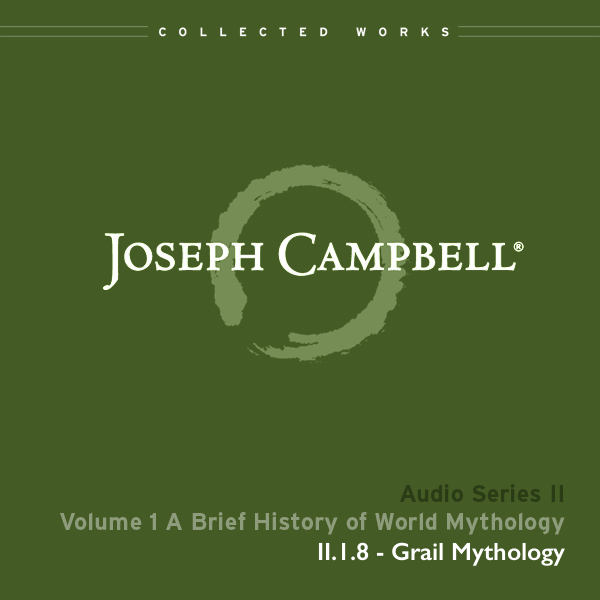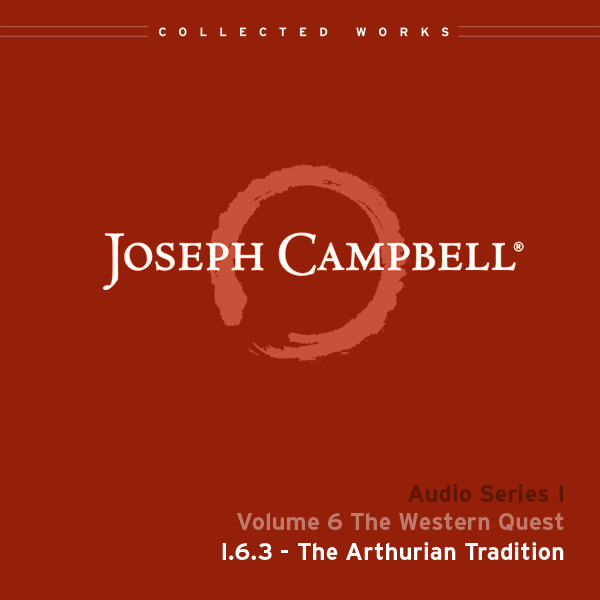The Round Table

There are only two references to the Round Table in Campbell’s most comprehensive study of the Grail Romances, The Masks of God: Creative Mythology. There he notes that “It was in Wace’s work that the first literary mention of the Round Table appeared, and in Layamon’s that its shape was explained as designed to avoid such disputes for precedence as were common at Celtic feasts.” (525) Wace’s poem Roman de Brut appeared in 1175, and it was the direct source of a poem called Brut, written in Anglo-Saxon alliterative verse in 1204, by Layamon, an English priest. Layamon introduces
the story of a savage fight for precedence at a court feast, which was the immediate cause for fashioning the Round Table. The Celts had a grievous habit of quarrelling about precedence at banquets, probably because it was their custom to bestow the largest portion of meat upon the bravest warrior. It was also their practice to banquet seated in a circle with the most valiant chieftain of the company placed in the middle [….] Layamon’s version so closely parallels early Celtic stories of banquet fights, and has so barbaric a tone, as to make it evident that he is here recounting a folk-tale of pure Celtic origin, which must have been connected with Arthur before his time, and probably before that of Wace.
(Eugene Mason, translator. “Excursus II — The Round Table” from Arthurian Chronicles: Roman de Brut. New York: E.P Dutton, 1920, p. xvi)
Read more
 It is not surprising, therefore, to see the myth employed in this secular manner, as a form of political propaganda to support and legitimize the Anglo-Norman monarchy. Campbell, too, would see the image of the Round Table in largely secular terms, when he turned to his favorite Arthurian poem, Wolfram von Eschenbach’s Parzival. There, he suggests, the Round Table “stands for the social order of the period of which it was the summit and consummation. The young knight’s concern for his reputation as one worthy of that circle was his motive for holding his tongue when his own better nature was actually pressing him to speak,” and it is contrast to the ceremony in the Grail Castle, “which had not been a feature of the normal daylight world visible to all, but dreamlike, visionary, mythic” (Creative Mythology, 454). At the same time, in the first decade of the thirteenth century, more sacred, ecclesiastical views of the Round Table emerged in the works of Geoffrey of Monmouth, Robert de Boron, and the anonymous author of The Quest of the Holy Grail. In those works, Merlin tells us that there were actually three Round Tables: the table of the Last Supper; the table used by Joseph of Arimathea after his escape from prison with the Chalice; and the table built by Merlin for Arthur’s father, Uther Pendragon.
It is not surprising, therefore, to see the myth employed in this secular manner, as a form of political propaganda to support and legitimize the Anglo-Norman monarchy. Campbell, too, would see the image of the Round Table in largely secular terms, when he turned to his favorite Arthurian poem, Wolfram von Eschenbach’s Parzival. There, he suggests, the Round Table “stands for the social order of the period of which it was the summit and consummation. The young knight’s concern for his reputation as one worthy of that circle was his motive for holding his tongue when his own better nature was actually pressing him to speak,” and it is contrast to the ceremony in the Grail Castle, “which had not been a feature of the normal daylight world visible to all, but dreamlike, visionary, mythic” (Creative Mythology, 454). At the same time, in the first decade of the thirteenth century, more sacred, ecclesiastical views of the Round Table emerged in the works of Geoffrey of Monmouth, Robert de Boron, and the anonymous author of The Quest of the Holy Grail. In those works, Merlin tells us that there were actually three Round Tables: the table of the Last Supper; the table used by Joseph of Arimathea after his escape from prison with the Chalice; and the table built by Merlin for Arthur’s father, Uther Pendragon.
Certainly the most spectacular epiphany of the Grail in the ecclesiastical romances occurs in The Quest of the Holy Grail, on Pentecost Sunday, when all the Knights are seated at the Round Table. A spectacular tempest blows through the castle. All the doors slam shut, and angels waft into the room, carrying two candles, and a red silk cloth, which they use to cover the Holy Grail, which they put on the Table, with the bleeding spear of Longinus held up above it. When the Grail disappears, the Knights all vow to go in quest of it, each one — as Campbell was so fond of saying — entering the “forest at that point which he himself had selected, and where there was no trail or path, at its darkest point.” (Romance of the Grail, 136)
In our time, the secular and sacred perspectives on the Round Table and the Grail legends have been richly amplified by the psychological views of Emma Jung and Marie-Louise von Franz, in their marvelous book on The Grail Legend, in which they speak of several tables:
- Wolfram’s garnet hyacinth with 2 ivory supports
- Chrétien ivory table with ebony supports
- Charlemagne’s Table for 12 peers with 3 circles
- Solomon’s Table: a gigantic emerald set with pearls and precious stones
- Prester John’s emerald table with 2 amethyst uprights
- The Emerald Tablet of Hermes Trismegistus
- The alchemical table of the four elements in an engraving by Mylius
- The Sun table of Orphic mysteries in Proclus that supports the mixing bowl of Dionysus (the Krater) during initiations
- The offering tables in the Egyptian Books of the Dead
- Ezekiel’s sapphire throne with image of man upon it

The psychological symbolism of the table is then beautifully distilled: it is the “supporting base” of the human endeavor to synthesize the four functions, with the Grail serving as a symbol of the Self. It is for that reason that one finds a Round Table at Eranos, on the shores of Lago Maggiore, with Jung’s carving of the Grail on a stone in the bushes nearby. Campbell sat there for lunch a couple of times, when he was giving presentations in the 1950s. And I know which seat he would have most enjoyed: the one Merlin called the “Siege Perilous,” and accidentally sat in one occasion — and was thereby catapulted to the other world, departing on a hero’s journey, one that would bridge the secular and the sacred dimensions symbolized by the Round Table.
 Evans has degrees from Williams College, Antioch International, and The Claremont Graduate School. He is the author of ten books and numerous articles on comparative literature and mythology, and has taught at colleges in Switzerland, Maryland, Texas, and California, and at the C.G. Jung Institute in Kusnacht. In the late 1970s, he traveled with Joseph Campbell on study tours of Northern France, Egypt, and Kenya, with a focus on the Arthurian Romances of the Middle Ages and the Mythologies of the Ancient World.
Evans has degrees from Williams College, Antioch International, and The Claremont Graduate School. He is the author of ten books and numerous articles on comparative literature and mythology, and has taught at colleges in Switzerland, Maryland, Texas, and California, and at the C.G. Jung Institute in Kusnacht. In the late 1970s, he traveled with Joseph Campbell on study tours of Northern France, Egypt, and Kenya, with a focus on the Arthurian Romances of the Middle Ages and the Mythologies of the Ancient World. Monthly Gift
Grail Mythology (Audio: Lecture II.1.8)
Our gift to you this month is an audio lecture download. Access this download for free until the end of the month.
In this talk, Joseph Campbell explores the Arthurian tales of the Grail–both in their humanist form, featuring the quest of the unsophisticated Sir Parzival, and in their spiritual form, featuring the quest of the unearthly Sir Galahad.
This series was recorded at the Esalen Institute in Big Sur, California during the summer of 1969, immediately following the Apollo 11 landing on the moon.
News & Updates
BAHA’I – Birth of Baha’u’llah (11/12)
JAIN – Jain New Year (11/13)
HINDU, JAIN, SIKH – Diwali (Deepavali)
Weekly Quote
Whenever a knight of the Grail tried to follow a path made by someone else, he went altogether astray. Where there is a way or path, it is someone else’s footsteps. Each of us has to find his own way
Myth Resources
The Origins of the World’s Mythologies
 “Not since Frazer’s Golden Bough has anyone achieved such a grand synthesis of world mythology. Boldly swimming upstream against the present scholarly emphasis on difference and context, Witzel assembles massive evidence for a single, prehistoric, Ur-mythology. An astonishing book.”–Wendy Doniger, Mircea Eliade Distinguished Service Professor of the History of Religions at the University of Chicago and author of The Woman Who Pretended to Be Who She Was
“Not since Frazer’s Golden Bough has anyone achieved such a grand synthesis of world mythology. Boldly swimming upstream against the present scholarly emphasis on difference and context, Witzel assembles massive evidence for a single, prehistoric, Ur-mythology. An astonishing book.”–Wendy Doniger, Mircea Eliade Distinguished Service Professor of the History of Religions at the University of Chicago and author of The Woman Who Pretended to Be Who She Was
“[Witzel’s] novel approach brings a different perspective to the myths he analyzes. By all rights, this book should provoke debate and is, therefore, indispensable to any research library. Summing Up: Essential.” —CHOICE
E.J. Michael Witzel is Wales Professor of Sanskrit at Harvard University.
Featured Video
Subscribe to JCF’s email list to receive a weekly MythBlast newsletter along with occasional news and special offers from JCF.






